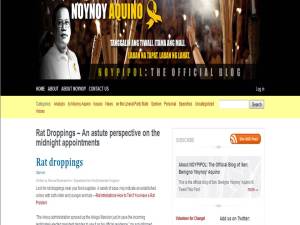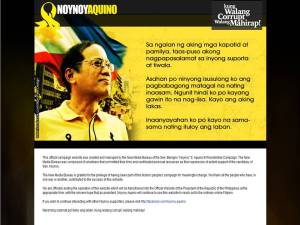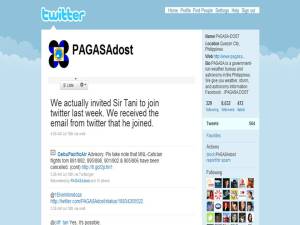July 17, 2010
The Philippines is in the state of transition – a new set of leaders has assumed their positions in the government. President Benigno Aquino III, or P-Noy, is now seated as the 15th President of the Republic together with Vice President Jejomar Binay, or V-Nay. As the two highest government officials, they are now faced with the challenges left by the intrigued-filled Arroyo administration.

President Benigno Aquino III or simply "P-Noy"
June 30, 2010 – The much-awaited stepping down of Former President Arroyo from Malacañang and the inauguration of P-Noy. Looking back, we could probably remember the noontime show-ish feel. The event was attended by the brightest stars of the showbiz industry and the program was filled with performances of the country’s best talents: Philippine Madrigal Singers, Philharmonic Orchestra, Ryan Cayabyab, Charice, Gary V, Ogie Alcasid, Regine Velasquez, APO Hiking Society, and Noel Cabangon. But more than the glamour of the event is the very inaugural speech of P-Noy.
P-Noy’s inaugural speech was very detailed. He mentioned his plans on the very complaints of an ordinary Filipino citizen like the traffic counterflows and the abusive use of sirens. He also presented his plans on former President Arroyo’s midnight appointments and the numerous graft and corruption cases during the administration. One point in P-Noy’s speech that caught my attention was his plan of implementing a feedback system.
As an Organizational Communication major, I am exposed to the different processes happening inside and outside organizations. One of those processes is collecting feedback. What is feedback? Feedback is one of the integral aspects of communication. As illustrated in Laswell’s model of communication, feedback or effect is the end result of communication. A sender will communicate a message through a specific channel. A receiver will then accept the message and send his/her feedback back to the sender. In simpler terms, feedback is the answer, comment, reaction, or response of a message’s receiver to the original sender.

Laswell's Model of Communication (taken from integralgc.com)
Consider the whole Philippines as a big organization. Let us assume P-Noy as the sender, the message is his first State of the Nation Address (SONA), and we as the receivers. To illustrate:
P-Noy > SONA > through television > We, the Filipino people > FEEDBACK
The question now is how do we send our feedback? P-Noy’s feedback system will answer that. Thanks to the power of the World Wide Web and the Internet, the Filipino people now have an avenue for voicing out their concerns on the different rules and policies by P-Noy and the whole of the Philippine government. From the pre-election period, campaign period, and the post-election period, a lot of websites have emerged to serve as an avenue for talking to P-Noy. The following are only a few of the websites:
Aside from the websites dedicated to the people’s contact to P-Noy, a few government offices have tapped into using the World Wide Web and the Internet for disseminating information and collecting feedback. Yes my dear friends, we now have the privilege of knowing the updates on the government offices through our well-loved social networking sites.
Through these social networking sites, we can also ask questions, communicate complaints, and express satisfaction to the government offices. With us being online most of the time, we can easily access these sites with just a few clicks. But, have you ever thought of these websites actually being of help to us and the Philippine government?
It’s not that I am against of these efforts of the government. I am actually happy that they have been trying to reach out to us citizens. But are these efforts really effective as a feedback mechanism for the government? Are they available to the whole population? Let me enumerate a few points I would like to raise regarding the online feedback mechanism of P-Noy and the rest of the Philippine government:
1. Computer illiteracy
Let us remember that one of our nation’s problems is illiteracy, specifically computer illiteracy. Some have a little knowledge of using the computer and some haven’t even seen a computer in their whole life.
2. Internet “disconnection”
It is important that we have an access to the Internet for us to be able to see and use the websites. Being online would require us of having a personal computer and an Internet provider. For some, they would still need to go to Internet shops.
3. Power interruption
This reason might seem shallow but can actually make sense. What if electricity is cut short? What if heavy rains disrupt Internet connection? Then, we wouldn’t be able to access the websites which requires us of electricity to use our personal computers, laptops, mobile phones, and Internet?
4. Poverty
The people who are mostly in need of the government’s help are the poor. It is evident that they comprise the bigger part of our population. They would also be the ones who would be deprived of computer literacy and Internet connection. Given such, the ones who can only use the feedback system is only a segment of the population – the rich, the literate.
Nonetheless, I salute the efforts done by the government to hear what we have to say. In the next years of the P-Noy administration, I hope that this feedback system will further be developed to reach and be used by a larger part of the population.









